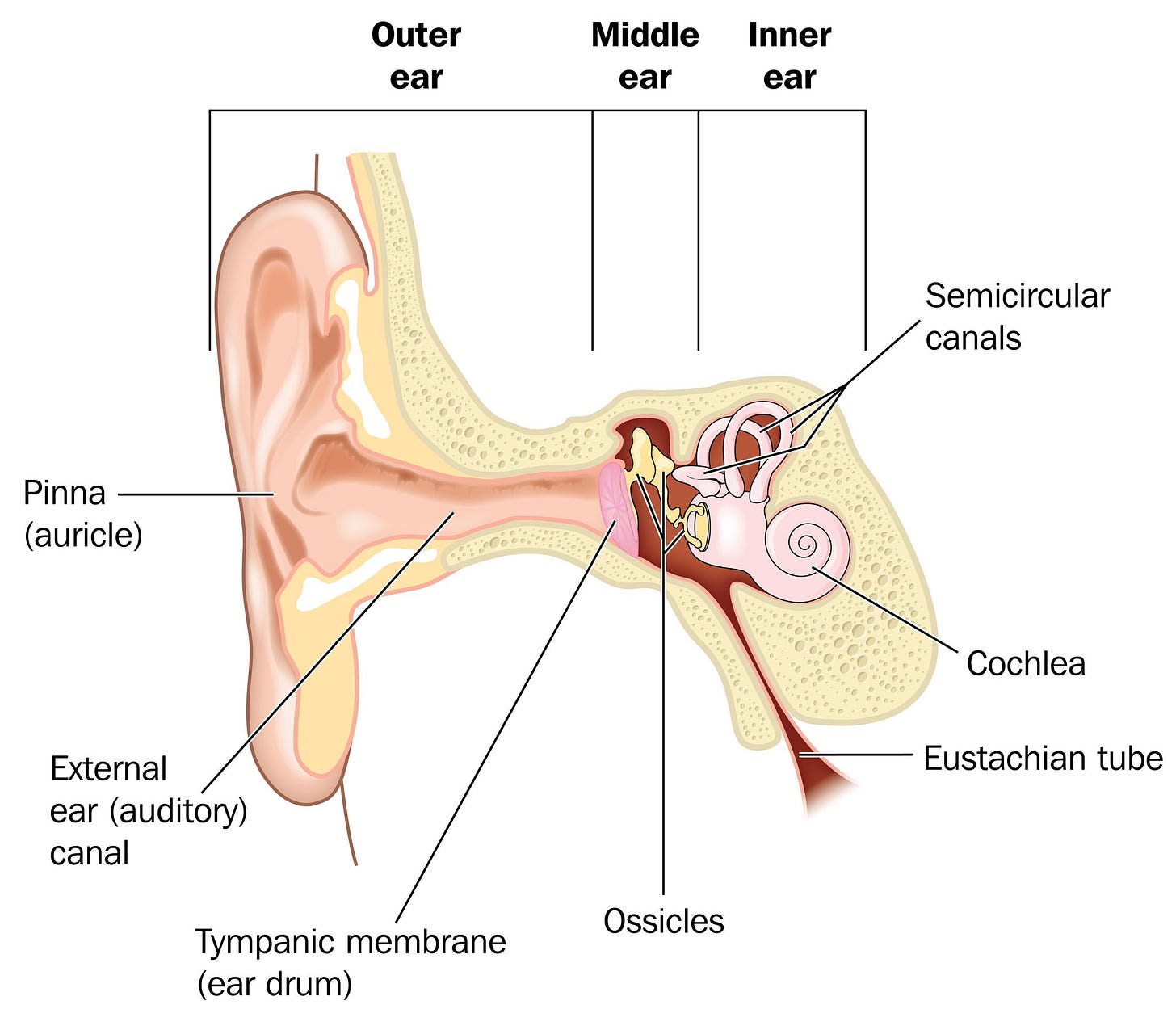SARS-COV-2 and The Ears - Direct Viral Invasion of Inner Ear Cells
The Damage - Tinnitus, Balance, Hearing loss, in Both Adults and Children
Echoes of a Pandemic: How SARS-COV-2 Reverberates Through Hearing, Balance and Children
When we think about the effects of COVID-19, our minds usually jump to coughs, fevers, and struggles to breathe. But beneath the surface, this virus has other, quieter ways of making itself heard — or perhaps, of taking hearing away. Emerging evidence now suggests that COVID-19, in its long-reaching grasp, may leave an imprint on the very way we hear and keep our balance. This exploration takes us into the intricate world of the inner ear, a place of delicate cells and complex systems, and reveals how this new virus could change our relationship with sound and silence alike.
The Symphony of Cells: Who Plays a Part?
In the grand orchestra of the inner ear, each cell type has a role, a voice in the harmony of hearing and balance. Hair cells, the sensory receptors of our hearing, detect vibrations and convert them into nerve signals. Nearby, Schwann cells support these delicate structures, insulating auditory neurons and ensuring signals travel smoothly.
When SARS-CoV-2 enters the scene, it doesn’t simply bypass this intricate system. Instead, it binds to ACE2 receptors on the surface of hair cells and Schwann cells, using the TMPRSS2 and FURIN enzymes as entry points to infiltrate these cells. Confocal microscopy studies have even shown the virus at work inside human inner ear tissue samples, infecting hair cells and Schwann cells alike. For many COVID-19 patients, this cellular takeover translates to real-life consequences: sound becomes distorted, muffled, or fades altogether, marking a pathway to hearing loss.
Hearing Loss: A New Kind of Silence
The world sounds different to those affected by sensorineural hearing loss, a type often caused by damage to the inner ear’s hair cells. In COVID-19 patients reporting audiovestibular symptoms, researchers have found reduced or absent otoacoustic emissions, which are subtle sounds produced by the healthy movement of hair cells. This finding points to something concerning — the virus appears to harm the very cells that should amplify our connection to sound.
Imagine the subtle rustle of leaves or the gentle tapping of rain becoming hard to hear or even gone altogether. Sensorineural hearing loss, once considered an unusual outcome of respiratory illness, now surfaces as a possible symptom of COVID-19, especially for those with lasting audiovestibular complaints.
Tinnitus and Balance: When Silence is Not So Quiet
Hearing isn’t the only sense at stake. For some COVID-19 patients, silence is filled with an uninvited sound: a persistent ringing, buzzing, or whooshing. Known as tinnitus, this sensation often emerges as a result of inflammation and viral infection in the inner ear. Tinnitus disrupts the quiet of a room, making it harder to rest, concentrate, or simply enjoy moments of peace.
Meanwhile, others experience balance issues due to vestibular dysfunction, another complication of inner ear involvement. Vertigo — the sensation that everything is spinning — has been reported among COVID-19 patients with inner ear symptoms. One study of 10 patients found that 9 experienced tinnitus, 6 suffered from vertigo, and all had varying degrees of hearing loss. This trifecta of symptoms hints at a deeper connection between COVID-19 and the sensory systems that ground us in the world.
A Growing Concern for Mothers and Babies
As researchers study COVID-19’s effects on hearing and balance, another question rises: What does this mean for unborn children? Otic progenitor cells (OPCs) present in the developing fetal inner ear can also be infected by SARS-CoV-2. This discovery raises concern about the potential for congenital hearing loss in babies born to mothers who contracted COVID-19 during pregnancy. It’s a pattern seen before with viruses like cytomegalovirus (CMV) and Zika, which have been linked to congenital hearing issues. While more research is needed, the possibility that this virus could alter a child’s world of sound before they even enter it is a sobering thought.
Listening to the Evidence
Science is still unraveling the ways COVID-19 impacts the inner ear, but the evidence is growing. From damaged hair cells to inflamed vestibular structures, the virus appears capable of altering our hearing and balance in ways we are only beginning to understand. As we continue to confront the pandemic’s wide-ranging effects, it’s vital to listen closely — not only to the stories of those affected but to the quieter, subtler impacts of this virus that might otherwise go unnoticed.
In a world already altered by COVID-19, these insights remind us of the importance of every sense we hold dear. Hearing may be invisible, but its loss is felt deeply. As research continues, we can hope for treatments that restore more than just silence but the full spectrum of sound, balance, and the peace that comes with both.
Sources
[1] How COVID-19 Can Attack the Inner Ear
[2] Why COVID-19 Can Affect the Inner Ear and What That Means for
[3] Direct SARS-CoV-2 infection of the human inner ear may underlie ...
[4] Direct SARS-CoV-2 infection of the human inner ear may underlie ...
[5] Study finds the SARS-CoV-2 virus can infect the inner ear | MIT News
[6] Study Finds COVID-19 Can Directly Affect Inner Ear
[7] A review on the impacts of COVID-19 on the auditory system - NCBI
[8] COVID-19 can infect the inner ear - Stanford' SCOPE
[9] Can COVID-19 Cause Hearing Loss? - University Hospitals
[10] Post-COVID-19 Syndrome: Audiometric Findings in Patients ... - NCBI
[11] Ear infections and COVID: The link, symptoms, and treatments medicalnewstoday.com
[12] Ear Pain and Covid: Symptoms and Care | Ada Health
[13] COVID-19 and Ear infection | Cooper University Health Care
[14] Study Finds COVID-19 Can Directly Affect the Inner Ear | Augusta


